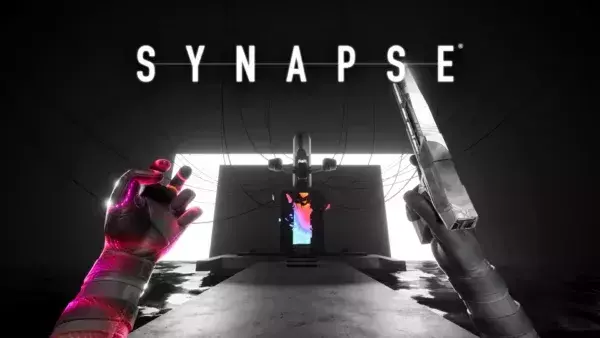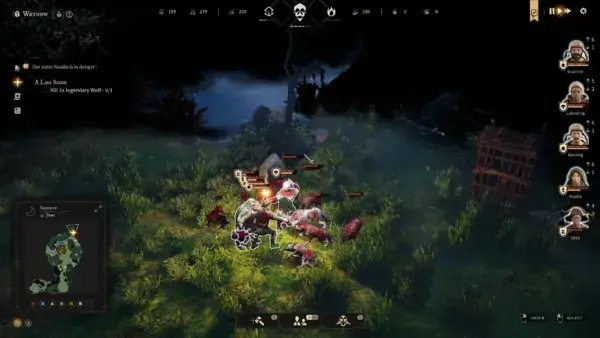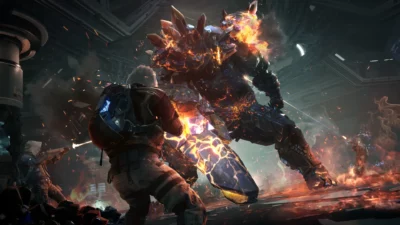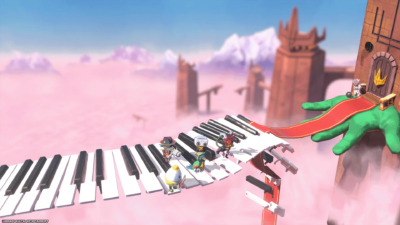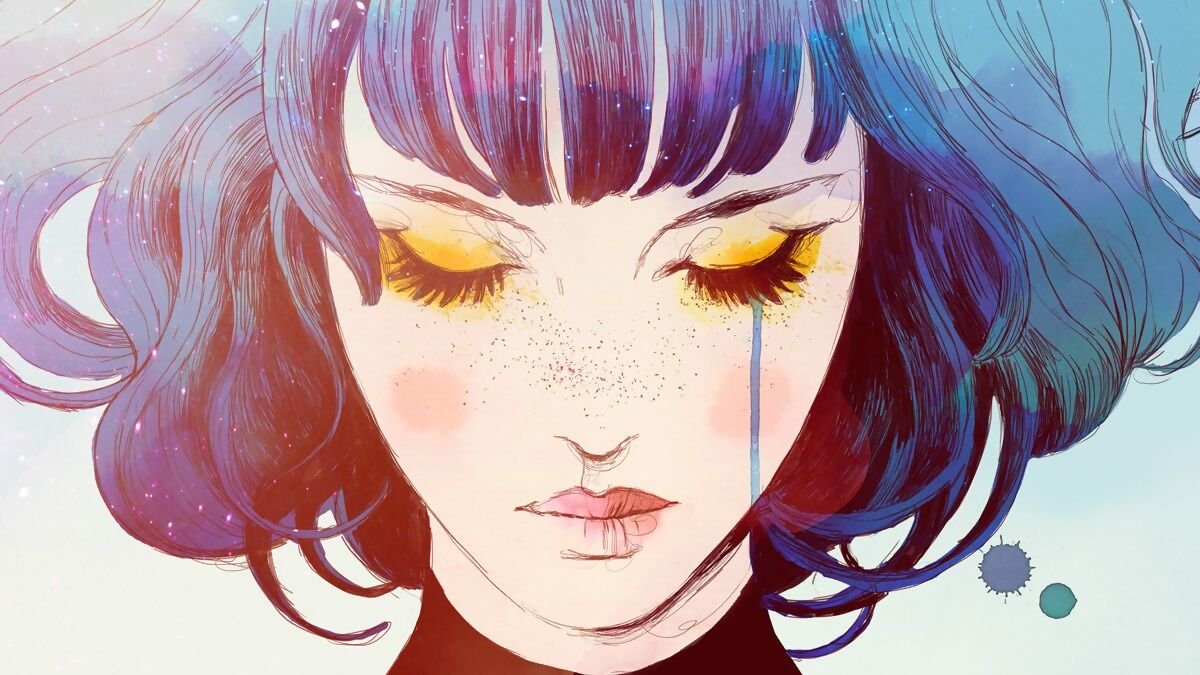
In Gris’s surreal world of pen lines and delicate splashes of watercolour, it’s possible to see subtle hues from other games. There’s the meditative air of Journey here, a hint of Team Ico-esque melancholy there, plus a dash of Fez’s laid-back 2D platforming.
At the same time, Gris takes all these hues and mixes them up in a way that’s all its own. The world its silent heroine inhabits – all crumbling towers, strange foliage, and geometric shapes – looks like something from the pages of a French graphic novel, and the French illustrator/writer Jean ‘Moebius’ Giraud is one of several artists whose work, Gris’s creators admit, influenced the game’s look.
Beguiling in still images, Gris looks even more enthralling in motion: its shimmering backdrops and delicate hand-drawn animation is really something to behold. The heroine moves with an ethereal grace, whether she’s bounding through deserted colonnades or leaping across angular tree-tops; in a playful nod to Super Mario’s ground pound, she even has a quirky move that sees her dress puff out into a solid cube, allowing her to crash down onto objects like a falling anvil.
Not that you’ll find anything in the way of a Goomba to squish here; the world of Gris may look forbidding at times, but its creators have deliberately avoided making the game an exercise in joypad-gnawing precision like Super Meat Boy – a conscious design decision on the part of Berlin- based developer Nomada Studio.
“One of the hardest parts creating Gris was the design of its puzzles,” studio co-founder Adrian Cuevas tells us via email. “From the very beginning, we knew [the titular protagonist] Gris couldn’t die in the game as it didn’t fit with the story, and we wanted to encourage casual gamers to play it. On top of that, we didn’t want to have repetitive mechanics, and we love to add a twist after you have mastered a skill.”
In the brief portion we played, the main challenges we faced were of timing: how best to negotiate a series of platforms that appear and disappear in a predefined order; what path to take in a meandering network of underwater caverns. Elsewhere, it’s simply enough to take in the scenery, the gently downbeat piano soundtrack, and figure out how we’re meant to interact with this odd new world.
Gris entirely lacks a HUD, and button prompts are kept to an absolute minimum, so it’s up to the player to read the subtle environmental clues about how everything works. Spectral balls of light can be collected and plugged into certain areas to create shimmering bridges; dancing clouds of red, triangular butterflies represent areas that boost our heroine to new heights.

Like Cuphead, Gris is another platformer that uses Unity to striking effect.
These are ideas we’ve seen in countless earlier platformers, but the fascination of Gris is how subtly they’re integrated into the game’s sumptuous environments, created by Catalan artist Conrad Roset. Platforms that appear and then disintegrate have been around since at least the days of Jet Set Willy on the ZX Spectrum, but seldom as engagingly animated as they are in Gris. Actually making Gris look so bewitchingly hand-crafted was one of the early challenges, Cuevas tells us: work on the game’s visuals initially began with traditional brush-and-paper techniques, but these ultimately proved too time-consuming to implement across the game’s wide variety of art assets.
“Then we investigated different techniques we could use to make it look as though the game’s drawn on paper,” Cuevas says. “We tried different pencil strokes, scanned paper textures, scanned watercolour stains, and worked a lot with shaders that could help us make it look as close as possible to traditional hand-drawn animation.”
Equally key to Gris’s atmosphere is its music, composed by Berlinist, a self-described ‘chamber pop’ band from Barcelona: Nomada’s designers worked closely with the musicians through each iteration of Gris’s development, allowing them to better marry the soundtrack with the game’s shifting landscape.
“We love their work, and they’ve been closely attached to the project from the beginning,” Cuevas tells us. “To create the music, first we pitched the game to the band so they could start thinking on which type of music they wanted to do and how it would evolve throughout the game. Then as soon as we had a prototype of a level they were able to play it and start composing for it.”

Conrad Roset’s watercolour and ink artwork dazzles from the opening scene.
Before forming Nomada, Cuevas and co-founder Roger Mendoza worked on such triple-A franchises as Assassin’s Creed and Rainbow Six. This might explain why, behind the arthouse presentation, Gris also takes a deceptively mainstream approach to its puzzle design. The demo even provides a dramatic set-piece: a gigantic bird-like creature that, at first glance, looks like a traditional boss battle – but then, like a lot of things in Gris, the encounter takes an unexpected and quite delightful twist.
There’s still much we don’t yet know about Gris at this stage – though ultimately, it’s the sense of dreamlike mystery that makes it so intriguing.
“We don’t want to talk much about Gris’s story,” Cuevas says, “but we can say it is a metaphor of her inner world and her growth through a painful moment in her life. It will become a bit more clear as you play it, but most of the story will be open to interpretation.”
Info
Genre: Platformer
Format: PC, Switch
Developer: Nomada Studio
Publisher: Devolver Digital
Release: December 2018


